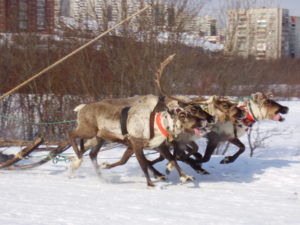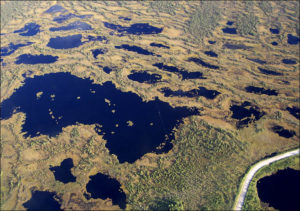Beyond my first and second book, I have written the following research articles and book chapters:
Abstract: In the mid-1940s an idea arose that a crash of an atomically-powered alien spaceship had caused the mysterious Tunguska explosion of 1908 in Siberia. Initially expressed as fiction, this speculation evolved into an active hypothesis that inspired decades’ worth of voluntary investigations. This article examines the history of the Tunguska nuclear hypothesis and what it reveals about nuclear and technological culture in the USSR. It argues that Soviet technological imagination had a tendency to place the country’s developments into a cosmic perspective that drew parallels between contemporary circumstances on Earth and the possible existence of technologies among civilizations elsewhere in the universe. Seeing the country’s communist project as part of a cosmic drama involved a form of universalism that aligned with Marxist ideology, but also possessed distinctive influences and afterlives. By concentrating on the cosmic analogies at play in Soviet technological imagination about the Tunguska explosion, this article also underscores how the suspected link between otherworldly civilizations and earthly actions informed ways of conceptualizing race and ethnicity, the boundaries of scientific knowledge, and the natural environment.
“Environmental Subjectivities from the Soviet North,” Slavic Review 78, no. 1 (Spring 2019): 1-22.
Abstract: This article develops the concept of “Soviet environmental subjectivity.” Taking a theoretical step toward comparative political ecology and neo-materialism, it makes the case that engagement with the natural environment comprised a potent, but underappreciated, determinant of Soviet subjectivity. To elaborate this argument, the article examines the life stories of three individuals who spent time in a common region in the far north: ornithologist Oleg Semenov-Tian-Shanskii, geologist Leonid Potemkin, and aspiring ballerina turned technician and prisoner Inna Tartakovskaia. Their lives reveal certain distinguishing features of Soviet environmental subjectivities, including a common desire to both exploit and protect the environment and a tendency for the state’s punitive use of harsh natural conditions to alter subjective experiences. Furthermore, the very different paths of these individuals-one became an environmentalist, one defended the Soviet treatment of the natural world, and one did not actively engage in environmental politics-indicate the possible pervasiveness of environmental subjectivities in the Soviet Union.
Abstract: This paper explores the parallel histories of two institutions in the Soviet north: the Lapland Nature Reserve just west of Lake Imandra on the Kola Peninsula and the neighboring Red Pulozero collective farm. Both created in the throes of Stalinism in the early 1930s, the former aimed to restore wild reindeer on a protected parcel of land and the latter sought to turn a small Sami community into practitioners of socialist reindeer herding. Over time the relationship between these reindeer pastoralists and preservationists vacillated from mutual assistance to mutual antagonism. Sami herders provided essential knowledge for the conservation program, but later found their domestic reindeer roaming on the territory of the reserve. Conservationists hired Sami staff, but later accused them of poaching wild reindeer. In the end these tensions contributed to the closure of the collective farm in the early 1960s and appropriation of Pulozero reindeer by veterinary scientists.
Abstract: Thoroughly a product of imperial Russia’s aristocratic culture, the mineralogist and geochemist Aleksandr Fersman rose to the top of the country’s scientific establishment after the Bolsheviks took control. He then remained a staunch supporter of various industrial projects through much of the Stalinist period. This essay puts Fersman’s thinking about the natural world in conversation with a quite distinctive mode of intellectual inquiry that developed contemporaneously. Eurasianism was a philosophical doctrine of a group of Russian émigrés who emphasized Russia’s unique status straddling Europe and Asia. While Fersman did not belong to this group of thinkers, a number of his ideas drew on specific experiences in the environments of the Eurasian landmass. Indeed, the article argues that Fersman’s dualistic understanding of nature, his advocacy for the field of geochemistry, his definition of deserts, and a scheme he proposed for industrial operations owed much to the Eurasian settings of the science he practiced. Furthermore, this case of a Eurasian mineralogist illuminates novel aspects of the interplay between national and global sciences.
Abstract: On December 5, 1935, a series of catastrophic avalanches in the Khibiny Mountains in the Soviet Union took eighty-nine lives. The victims included miners for a new industrial enterprise, forced peasant migrants, and the families of workers who had resided in hastily constructed wooden buildings at the foothill of Mount Iukspor. In this article I argue that Stalinist policies of rapid industrialization and settlement of this far northern territory directly heightened human vulnerability to snow avalanches in the years leading up to this tragedy. After the disaster, industrial leaders, scientists, and state planners began to pursue a relatively effective strategy to mitigate mountain-slope hazards. This disaster history offers a new perspective on the environmental history of the Soviet Union and the experience of communist countries in a global context. I show that distinct processes related to Stalinist industrialization generated risk, and actors in an authoritarian state curtailed vulnerability.
Abstract: This paper offers an environmental history of a group of forced migrants who were sent to work on a Soviet industrial project in the far north during the 1930s. As part of the drive to industrialize the country rapidly, the Soviet state deported thousands of peasants who had been declared class enemies to the previously desolate Khibiny Mountains in order to serve as the labor force for a new socialist mining town. These forced migrants became known as ‘‘special settlers.’’ I argue that the integration of the environment as a dynamic force in the social history of Stalinism enriches current explanations for why the Soviet state was often unable to carry out its intentions during industrialization. I also maintain that through the pursuit of the global process of industrialization, the Soviet government contributed to making the special settlers in the Khibiny Mountains vulnerable to natural hazards.

I’ve also written a number of pieces over that review developments in the field of Russian environmental history or advance interpretations based on the secondary literature.
“A New Environmental History of Socialist States,” Monthly Review 74, no. 4 (September 2022): 53-62.
“The Environment of Postwar Stalinism,” History Workshop Journal 72, no. 1 (October 2011): 315-320.
